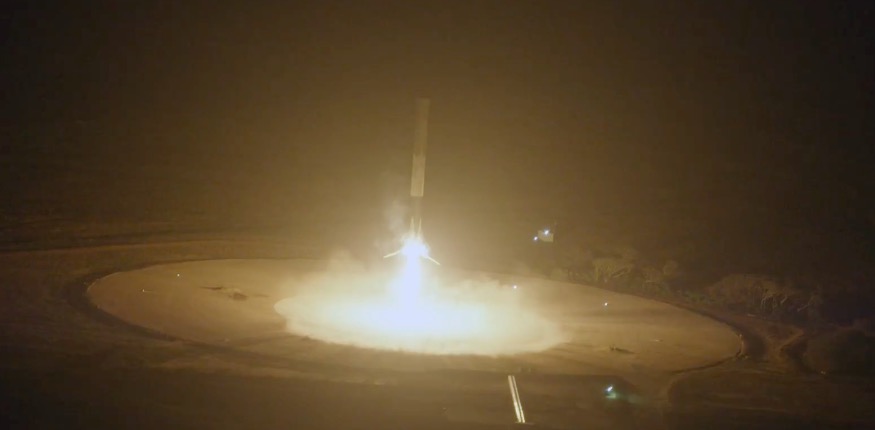For the First Time, SpaceX Rocket Lands Back on Earth After Delivering Satellites to Space
Actual rocket science.

SpaceX has just taken another important step in the race for reusable space rockets. Last night, for the first time, a rocket delivered its payload to orbit and then made a landing back where it came from without falling into the ocean or exploding.
It’s a pretty exciting time, to say the least. Blue Origin recently became the first to land a rocket after sending it to space, but SpaceX’s rocket went about twice as high and actually completed a successful, unrelated satellite mission before testing its landing capabilities. The Falcon 9 rocket put 11 ORBCOMM satellites into orbit as planned in SpaceX’s first mission since they had a rocket unexpectedly explode just moments into an ISS resupply mission.
On SpaceX’s official explanation of the mission, it’s even noted that testing the landing capabilities is a secondary objective. It would be impressive on its own to fly the rocket so far into space—with necessary speeds of 8 kilometers per second—and land back on Earth, but tacking the accomplishment onto the end of a very real, functional space mission just drives home the point: We’re close to a future in which rockets can fly a payload to space, drop it off, and then come back home for reuse.
If you want to watch the whole thing, (skip to about 22:50 for the launch, and the landing comes around 32:25) you can take a look below.
Welcome to the future. We look forward to seeing SpaceX make a full trip all the way to the ISS again and stick that landing on their sea barge.
(via BBC News)
—Please make note of The Mary Sue’s general comment policy.—
Do you follow The Mary Sue on Twitter, Facebook, Tumblr, Pinterest, & Google +?
Have a tip we should know? tips@themarysue.com